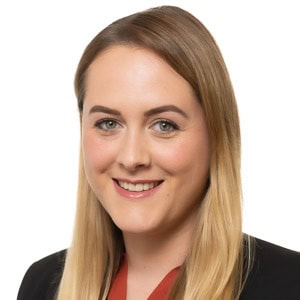Fundamental Dishonesty
On Monday 13 April 2015, section 57 of the Criminal Justice and Courts Act 2015 (‘CJCA 2015’) came into force. This legislation has radical implications for parties to personal injury claims and their representatives.
Section 57 provides that the court must dismiss the claimant’s whole claim where it is satisfied that the claimant has been fundamentally dishonest, unless by doing so there would be a substantial injustice.
Where has this legislation come from?
The introduction of section 57 arises as a result of a chain of legislative changes, which stemmed from the Jackson reforms. From 1 April 2013, unsuccessful defendants were no longer liable to pay ATE premiums and success fees. At the same time, the concept of Qualified One-Way Costs Shifting (QOCS) was also introduced to help preserve claimants’ access to justice.
As we know, QOCS prevents claimants from being liable to pay the defendants’ costs where their claims are unsuccessful. The introduction of QOCS subsequently led to objections from defendants and their insurers, who had little chance of recovering their costs incurred in defending claims. They argued that without the costs deterrent, QOCS would encourage dishonest claims.
In response to defendants’ concerns, CPR 44.16 was introduced, and it is from this rule that the term ‘fundamental dishonesty’ is derived. Under CPR 44.16(1) the claimant loses QOCS protection:
“where the claim is found on the balance of probabilities to be fundamentally dishonest”.
This term, “fundamentally dishonest”, has been incorporated into section 57 of the CJCA 2015, which will apply to all proceedings issued on or after 13 April 2015.
What does ‘fundamental dishonesty’ mean?
This question was considered in some detail by District Judge Malone in the unreported case of Gosling v (1) Hailo (2) Screwfix (2014). Mr Gosling sought damages in the region of £80,000 following a fall from a ladder, which was made by the first defendant and supplied by the second defendant.
The first defendant obtained surveillance evidence, which demonstrated a significantly higher level of function than that claimed by the claimant. The case against the first defendant subsequently settled for just £5,000 plus costs.
The claim against the second defendant was discontinued. The second defendant applied to enforce an adverse costs order (i.e. they asked that QOCS be disregarded) by contending that the claim was fundamentally dishonest. District Judge Malone held that fundamental dishonestly had to be interpreted “purposively and contextually”. He found that:
“….a Claimant should not be exposed to costs liability merely because he is shown to have been dishonest as to some collateral matter or perhaps to some minor, self contained head of damage. If on the other hand, the dishonesty went to the root of either the whole of his claim or a substantial part of his claim, then it appears to be that it would be a fundamentally dishonest claim”.
We do not yet know if ‘fundamental dishonesty’ for the purposes of CJCA 2015 will be applied by judges in the same way. Lord Faulks made the following suggestions during the House of Lords debate regarding section 57:
“Ask any judge to decide whether someone has been fundamentally dishonest, it is well within the capacity of any judge. They will know exactly what the clause is aimed at—not the minor inaccuracy about bus fares or the like, but something that goes to the heart. I do not suggest that it wins many prizes for elegance, but it sends the right message to the judge.” (Hansard, 23 July 2014)
What can be expected in the future?
As section 57 only applies to claimants, defendants will no doubt seek to utilise this new law to run the fundamental dishonesty argument more often. If a defendant is able to prove that the dishonesty went to the root of either the whole or a substantial part of the claimant’s claim, this not only helps the defendant challenge the overall value of the claim but it will also allow them to recover their costs.
Defendants will certainly seek to support their applications under section 57 with surveillance evidence. This already very common tactic utilised by insurance companies is therefore likely to increase following the introduction of section 57. My colleague, Cheryl Abrahams, has produced a very interesting blog containing tips on what to do with surveillance evidence in personal injury claims, which can help prevent doubt being cast on claimants’ credibility.
Final thoughts
We await clarification from the courts as to the definition of fundamental dishonesty. Judges are likely to interpret this phrase differently, and this could result in satellite litigation. However, no matter what meaning is attributed to ‘fundamental dishonestly’, claimants will now need to be more confident than ever in the accuracy of their claims and ensure that surveillance evidence is handled appropriately. This will help protect the genuine claims from being discontinued, under-settled or dismissed following defendant applications under CPR 44.16 or the new section 57.










